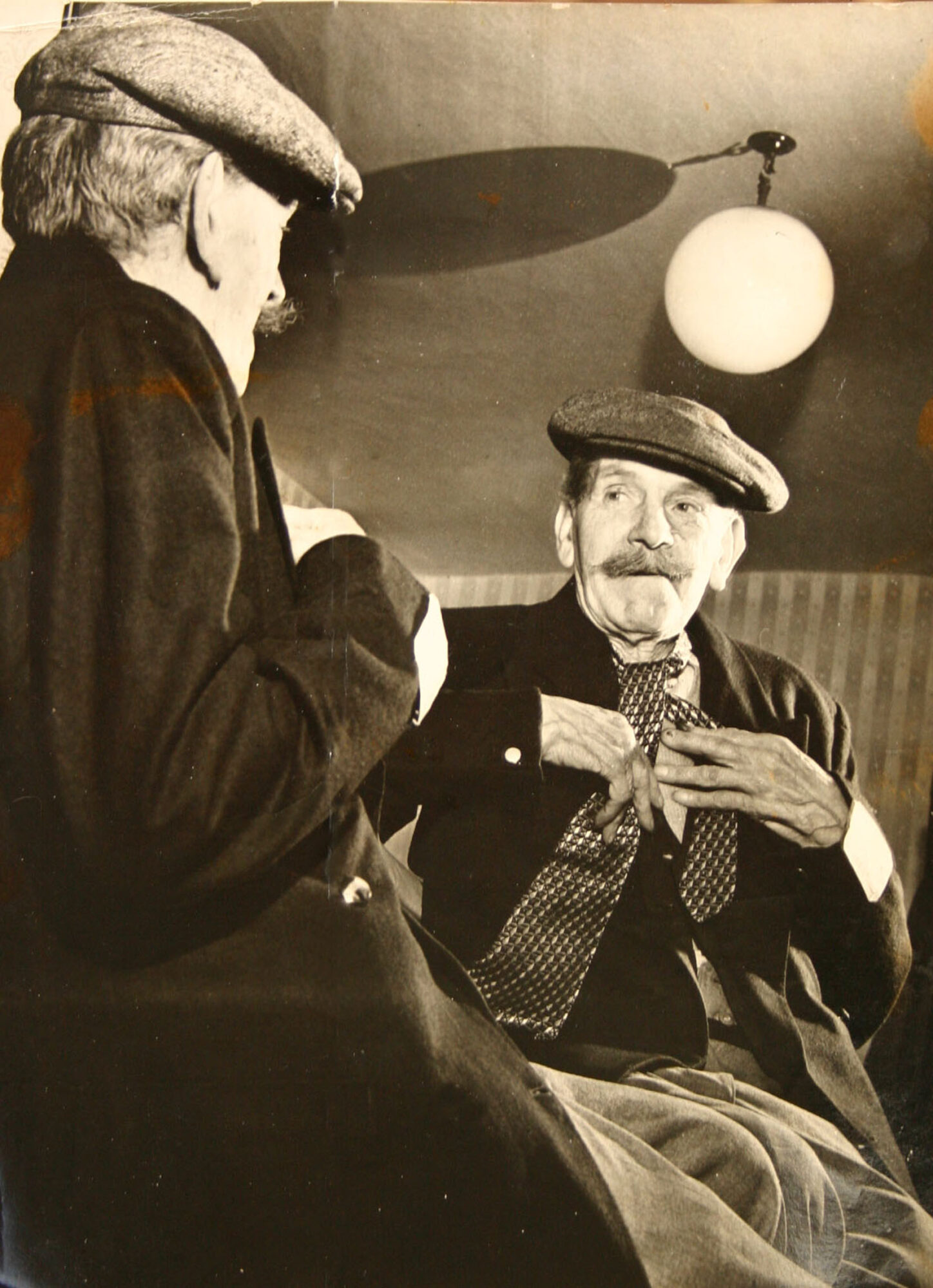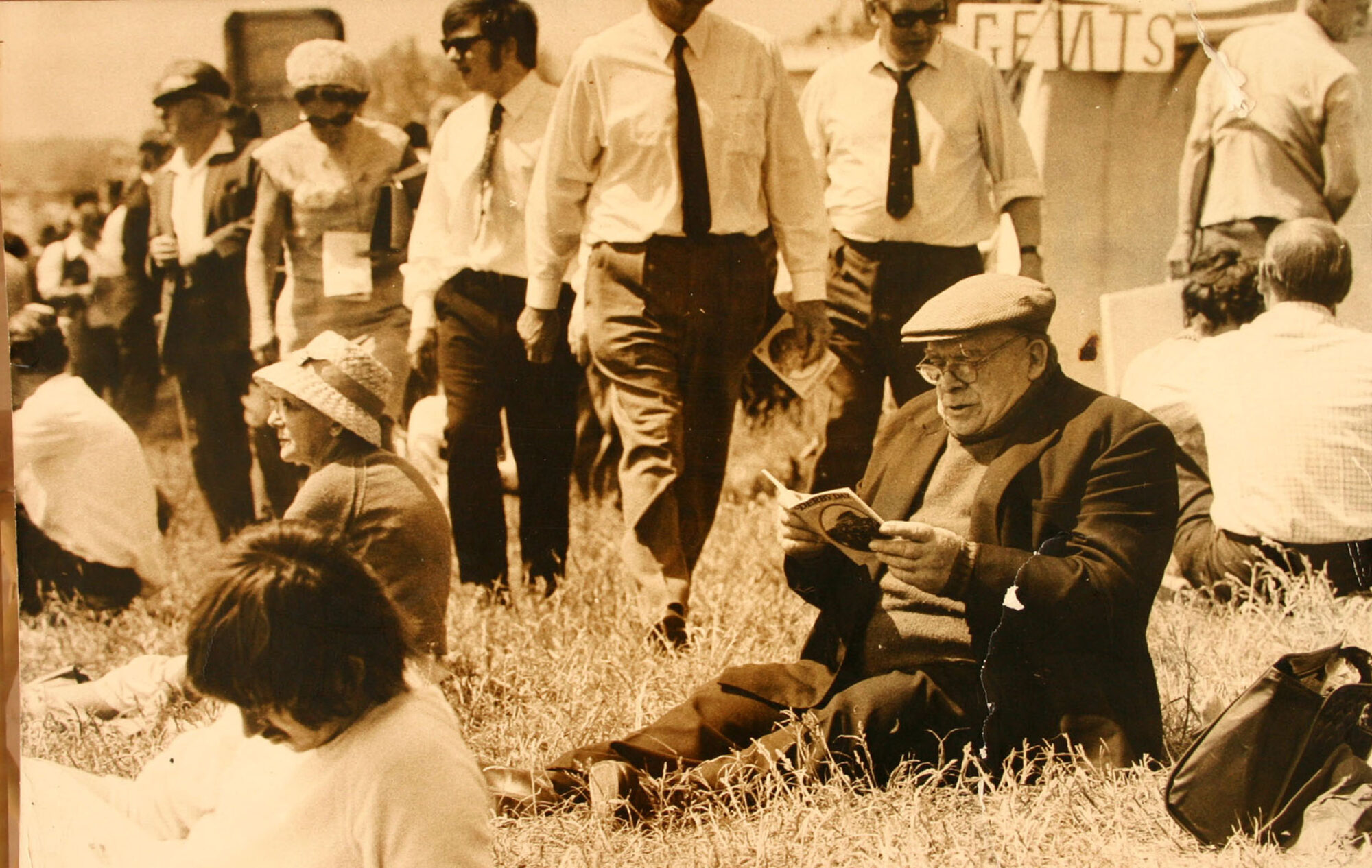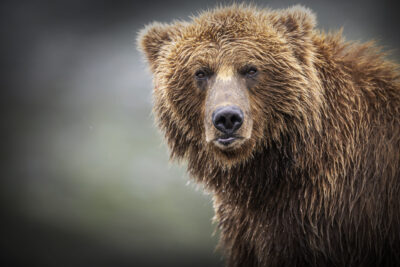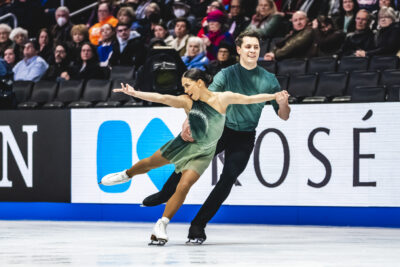
Chaps and their Caps
by Eddy Rawlinson
Men were photographed wearing their caps on holiday at Blackpool, in a hen pen smoking a pipe, under the shade of a large flat cap in an out-of-focus postcard - all for the family album.
The Burnley Miners Social Club sells more Benedictine liqueur than any other establishment in the world. The great grandson of Alexandre Le Grand, the founder of the Benedictine distillery, once came to the ‘Miners’ to find out for himself what made the drink the club’s number one selling liqueur.
During the First World War soldiers from Burnley had sampled its delight when stationed in Fecamp, France, and that local connection had remained with Burnley since 1914. The meeting had the makings of a good picture feature for the Daily Mirror so I went to the club to cover the reunion.

Alexandre Le Grand
The obvious picture was the Frenchman with a pint of English beer while the old soldiers enjoyed a tipple of Bene. The veterans were wearing berets for the occasion and I had bought a flat cap for their French visitor to wear. It was then I realised how Burnley became the number one seller of Bene’ in the way the old soldiers were downing the stuff. With sincere entente cordiale they presented their guest with a flat cap amid cheers.
“The next morning his picture appeared in the Mirror and he had to answer some awkward questions to his wife about all those empty wine glasses”
While searching through my files for the photograph of the Frenchman wearing his flat cap I found other photographs I had taken of the great ‘northern ratter’ and realised how the role of the flat cap had changed. There was an affinity with flat caps and black and white photography. It was from an age that has passed us by. Men were photographed wearing their caps on holiday at Blackpool, in a hen pen smoking a pipe, under the shade of a large flat cap in an out-of-focus postcard – all for the family album. Before dogs became ‘posh pets’ and terraced house terriers had the freedom of the right to roam, they were to be seen wandering along cobbled streets, usually with a man wearing a flat cap, something Lowry managed to capture.

Wine tasting!
There was a photograph in my files of a man in a flat cap at an outside wine tasting festival. It made a good picture as he sat quietly sipping his glass of wine with several empty glasses on the table left there by other wine tasters. The next morning his picture appeared in the Mirror and he had to answer some awkward questions to his wife about all those empty wine glasses, so his son told later. There were photographs I had taken in Manchester’s Piccadilly Gardens of an old man wearing a cap, looking through a magnifying glass and picking ‘winners’ from a morning newspaper. Also, one of an old age pensioner who been fitted out with a new suit from an outfitter in Bury. I can’t remember why, but he looked a smart lad wearing his flat cap mirrored in black and white.
The London office of the Mirror looked upon the north as flat cap country and I had to endure comments about caps and whippets whenever I worked in the capital. It was with great delight when covering the Derby I came across an old man sat on the grass weighing up form wearing a flat cap. It was even more delightful when they used his photograph the next day, although the London lads claimed he would be a northerner down to Epsom for the Derby.
“If a man was thrown out of a pub for some misdemeanour, the next day he would throw in his cap from the door before entering to see if he was still barred.”
Reg Smythe’s cartoon of Andy Capp made money for the Daily Mirror when he threw his Capp in with them in 1957 but it did nothing for the image of the north, it just increased the Mirror’s circulation figures. A beer swilling, pigeon racing layabout from Hartlepool who spent most of his time in the pub became a cult cartoon figure. Men were becoming more fashion conscious and wearing a flat cap was looked upon as being a joke and their sales slumped as Andy Capp’s popularity grew. His worldwide syndication made Reg Smythe a very rich man thanks to Andy’s flat cap, with his cartoon seen in 34 countries and syndicated to 700 newspapers worldwide.

Keeping up appearances
Up to the first half of the last century a flat cap was part of a worker’s everyday dress. Stories from that time gather embellishment and I was told that wives would hide their husband’s cap so he couldn’t go to the pub. It would probably have also stopped him joining in rolling his cap from one finger tip to the other along outstretched arms. I can’t remember my granddad rolling his cap like in the TV advert but I’m told they did it for bets. If a man was thrown out of a pub for some misdemeanour, the next day he would throw in his cap from the door before entering to see if he was still barred. If it came flying back out he was not welcome.
“The popularity of Peaky Blinders must be partly responsible for the boom in flat caps with many wannabe Tommy Shelbys also walking around with undercuts and waistcoats”
So we come to the late King of all flat caps – steeplejack Fred Dibnah, MBE., he was made famous when brought to our TV screens for the first time in 1979 by Burnley-born BBC producer Don Howarth. Don’s biography ‘The Fred Dibnah Story’ in hardback form is now a collector’s item. The image that viewers remember most of the BBC documentary was a tall chimney collapsing around Fred as he ran out of danger towards the camera. Then with a big smile as dust settled over him, he pushed back his flat cap with the immortal words “Did yer like that?” When Fred’s death was announced on news channel BBC 24 in November 2004, presenter Peter Sissons remarked: “They don’t make them like that anymore.” It was certainly the end of the flat cap as being a working man’s identity.

Time out
Figures show an 80% increase in flat cap sales. Not the nicotine stained Nor-Easter worn by Andy or a grease covered shiny flat cap like Fred’s but a sophisticated ‘ratter,’ now worn by people living in the South of England.
The popularity of Peaky Blinders must be partly responsible for the boom in flat caps with many wannabe Tommy Shelbys also walking around with undercuts and waistcoats. Even celebrities like David Beckham and Harry Styles are donning the hat. But before you rush out to claim your cap, hats are now imported at 80 to 100 Euros and up to £30 locally. At those prices Andy would have calculated “how many pints of ale?” against a new flat cap, then waited until one of his mates was worse for wear and exchanged caps, with the words “If the cap fits, wear it.”




